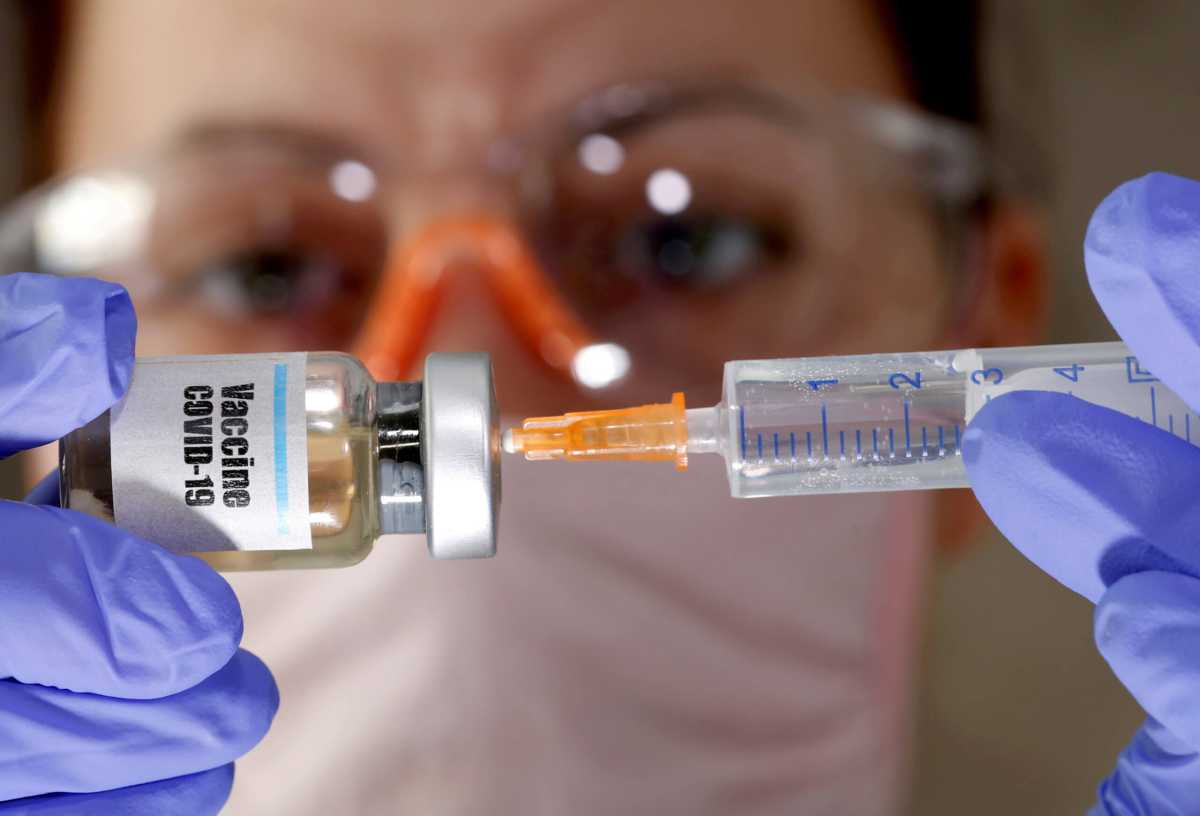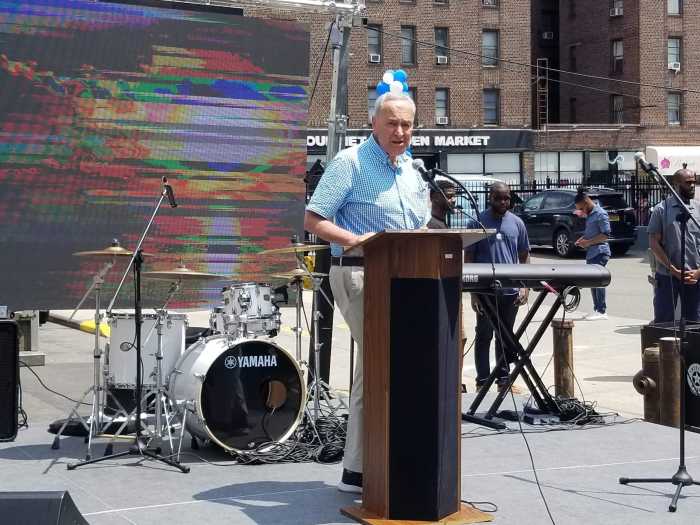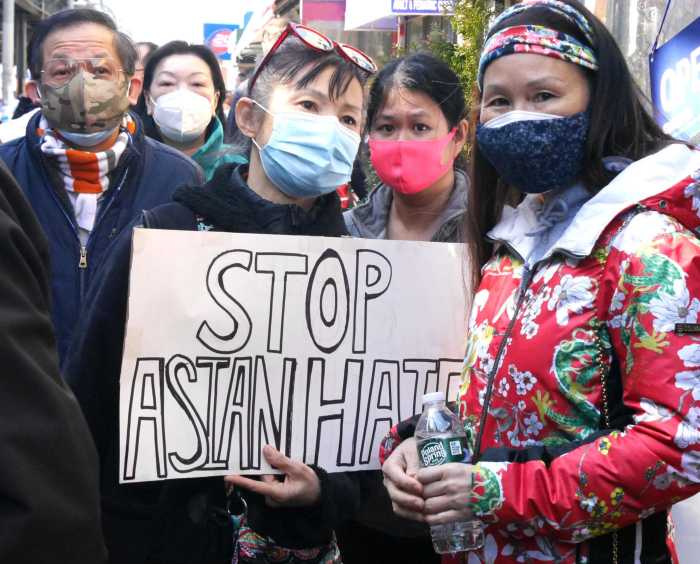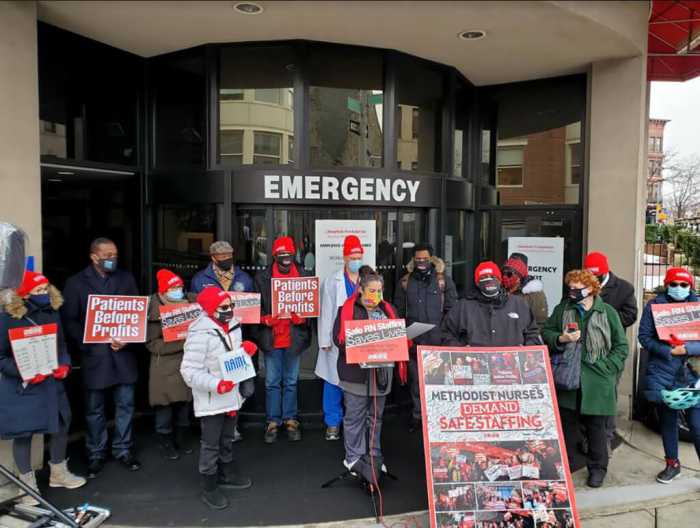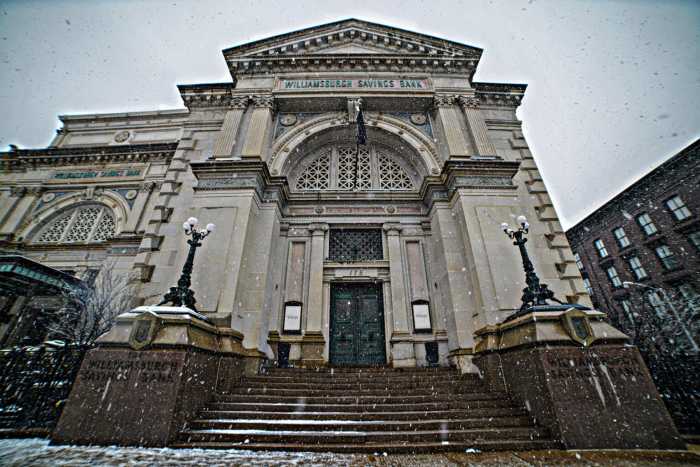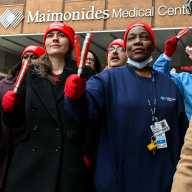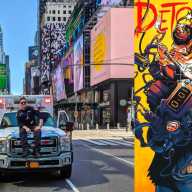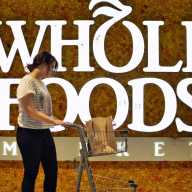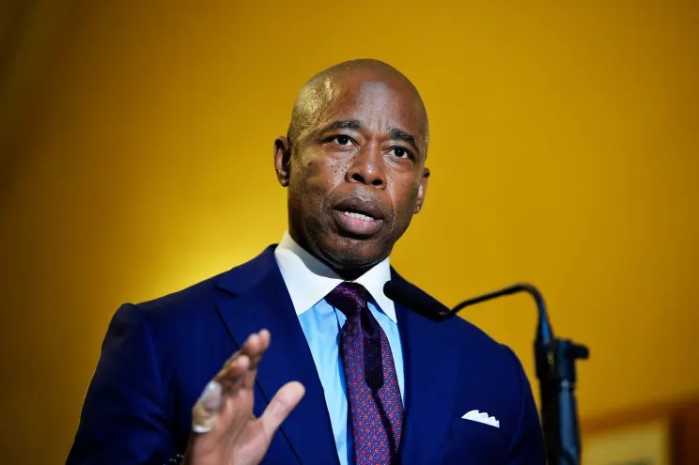The recent spike of COVID-19 cases in New York City remains on the decline — and inoculated city dwellers continue to avoid hospitalization and death relative to their unvaccinated neighbors, according to city data.
COVID cases on the decline
The Five Boroughs have seen an average of 9,536 cases per-day for the seven-day stretch ending on Jan. 20, when the most recent data is available — significantly lower than the peak of 43,192 cases per-day for the seven-day stretch ending on Jan. 4.
That data, provided by the New York City Department of Health, represents a nearly 80 percent decline in per-day cases in just 16 days in the Big Apple.
In Brooklyn, the borough saw an average of 3,010 positive cases per-day between Jan. 14 and Jan. 20 — which is also below the per-day peak of 12,561 cases during the seven-day stretch between Dec. 28 and Jan. 3. That represents a 76 percent decline in the number of cases in 17 days.
In New York City public schools, since the educational calendar began on Sept. 13, 2021, 123,919 students and 37,242 staff members have recorded positive tests — representing 939 and 282 cases per-day during that time frame, respectively.
Cumulatively, 17 schools and 4,931 classrooms have been closed due to outbreaks this educational year.
The push to vaccinate
New York City continues to outpace the national average of the percentage of vaccinated residents.
Nationwide, just 76.1 percent of Americans have received at least one dose of the vaccine, while 63.6 percent are fully inoculated. (25.4 percent have received booster doses).
In the Big Apple, by contrast, 83.9 percent of New Yorkers are at least partially vaccinated, and 74.4 percent of city dwellers have received both doses, or the Johnson & Johnson shot.
Kings County, however, is the least vaccinated borough, and noticeably lags behind the citywide totals, as only 68 percent of Brooklynites are fully inoculated. (Queens and Manhattan are the most-vaccinated boroughs, with 81 and 80 percent of residents considered fully immunized, respectively).
Children continue to be the least vaccinated cohort, as 49 percent of New Yorkers aged 5 to 17 are fully immunized, including just 41 percent of Brooklynites in that age group.
On the Zip Code level, Borough Park (11219) is the least inoculated area, with just 50 percent of that area receiving both doses.
Eight of the nine least-vaccinated Zip Codes in NYC are in Brooklyn:
Zip Code |
Neighborhood |
% Vaccinated |
| 11219 | Borough Park | 50% |
| 11691 | Far Rockaway | 52% |
| 11205 | Bed-Stuy/Clinton Hill/Fort Greene | 56% |
| 11211 | Williamsburg | 56% |
| 11230 | Midwood | 57 % |
| 11206 | Williamsburg | 57% |
| 11233 | Brownsville/Bed-Stuy | 57% |
| 11210 | Flatlands/Midwood | 57% |
| 11213 | Crown Heights | 58% |
According to city data on race, Black New Yorkers have seen the lowest vaccination rate (54 percent), followed by white city dwellers (60 percent) and Hispanic residents (67 percent). Meanwhile a whopping 92 percent of Asian New Yorkers are fully inoculated.
Hospitalizations and deaths
Data continues to show that vaccinated New Yorkers are significantly less likely to catch the virus, become hospitalized, or die.
Since the rollout of the jabs began on Jan. 17, New York recorded 144 cases per 100,000 vaccinated residents each week, compared with 810 cases per 100,000 unvaccinated people — showing that people without the jab were 5.625 times more likely to catch the virus (though many “breakthrough” cases are asymptomatic, meaning the data may be skewed).
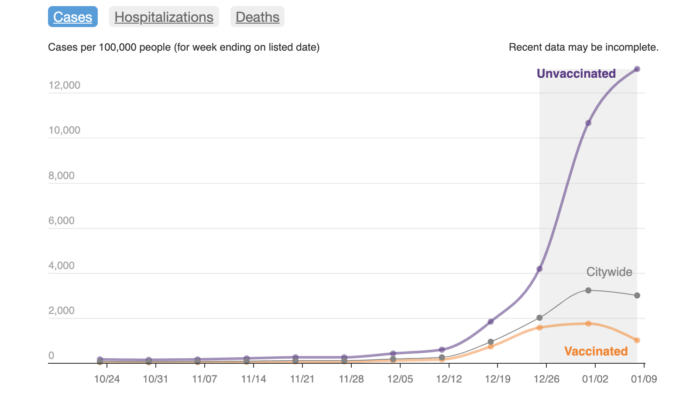
Per 100,000 residents on a weekly basis, just 4.48 people were hospitalized for COVID after receiving the shot, compared with 31.23 people who did not — meaning the unvaccinated have been 6.97 times more likely to go to the hospital for COVID-related illness since Jan. 17.
Death is also significantly more likely for the non-inoculated, as 0.69 people out of 100,000 die each week from COVID after getting the jab, compared with 3.64 out 100,000 who did not get the shot — effectively making the unvaccinated 5.28 times more likely to die from COVID-19 since the vaccine rollout began.
Pols and pleas
Mayor Eric Adams, at a press conference on Jan. 18, pleaded with Big Apple residents to get the vaccine, hailing the jabs as a the key to returning to normalcy.
“I’m going to say it over and over again, to be vaccinated and boosted,” Adams said. “Because when you’re getting vaccinated, it will allow us to keep our city moving forward, it will allow us to do the things we want to do.”
Meanwhile, Gov. Kathy Hochul, citing recent declines in cases, urged New York State residents to remain vigilant to avoid another spike.
“Our hard work to bring down the numbers during the winter surge is paying off, but we are not through this yet,” said Hochul. “Let’s keep using the tools — the vaccine, booster and masks – that will help slow the spread of this virus, protect our families, and keep our schools and businesses open.”
For his part, President Joe Biden, who recently deployed military personnel to assist with overflows at Coney Island Hospital, praised local governments for their work deploying the life-saving shots at “U.S. Conference of Mayors” of Jan. 21.
“In the battle against the deadly virus, we’ve gone from putting 2 million shots — vaccinations in people’s arms — to 210 million Americans fully vaccinated,” the commander in chief said. “And you mayors have been critical partners — I’m not trying to be nice to you, it’s just a fact. You’ve been critical partners in that fight from day one, from masking, to testing, to vaccinations.”


